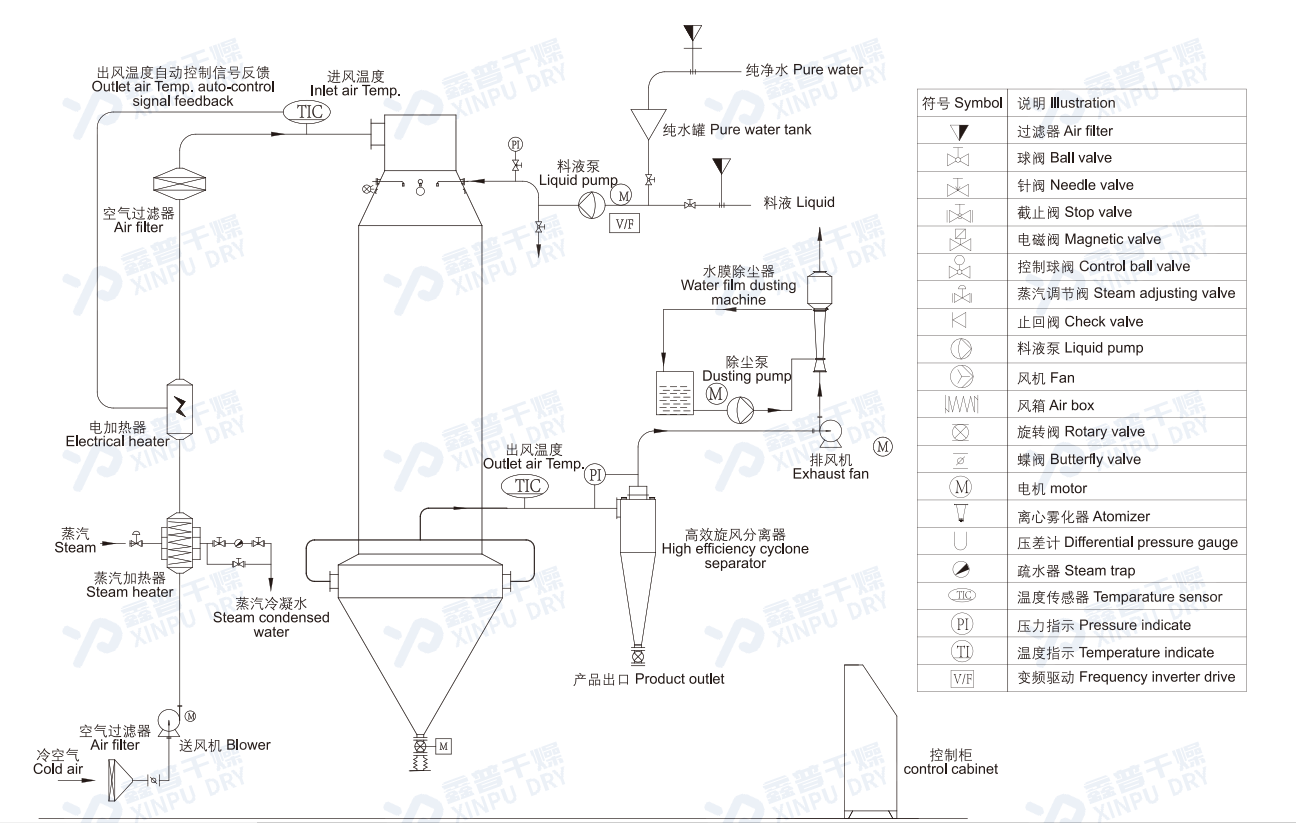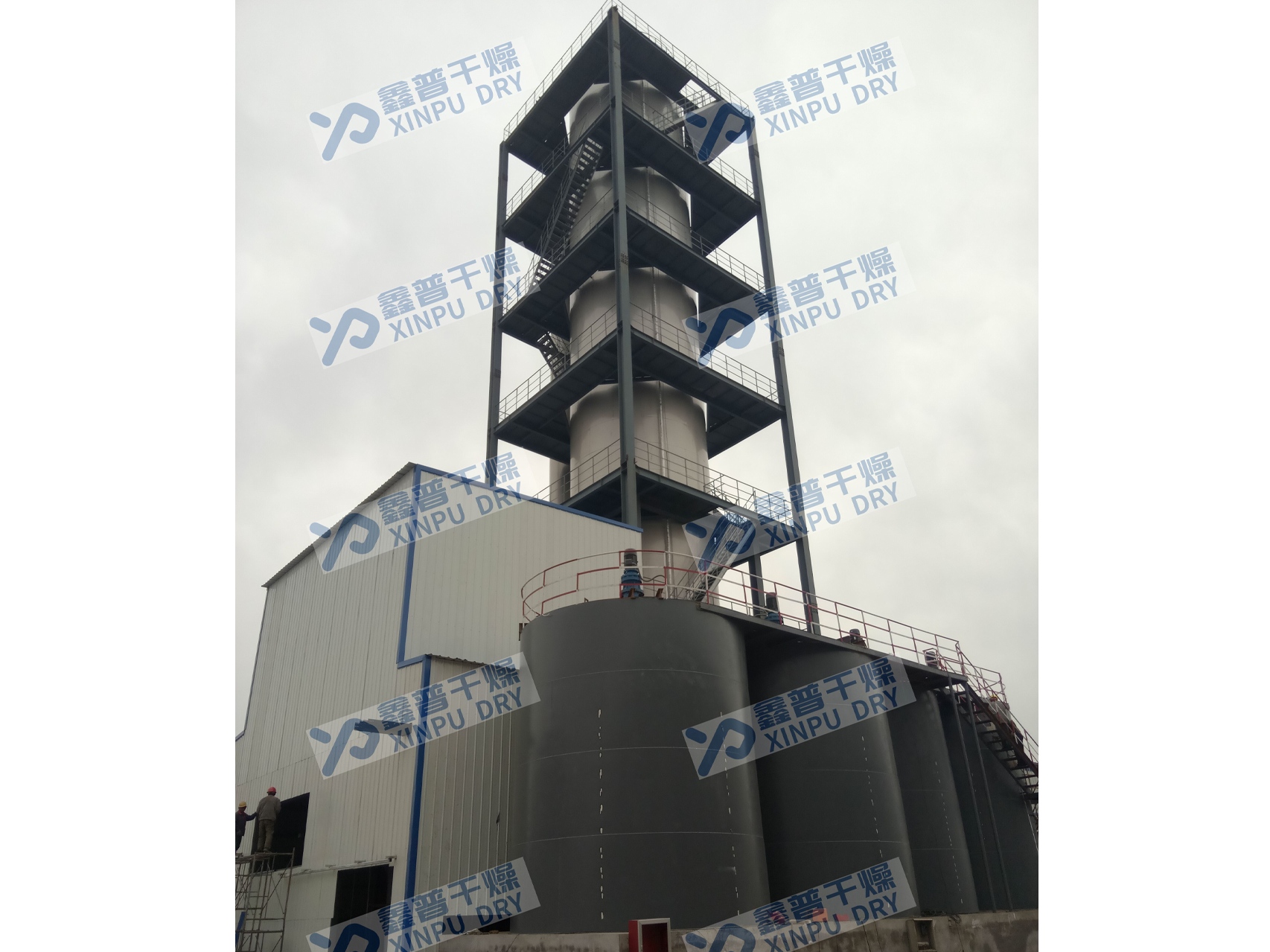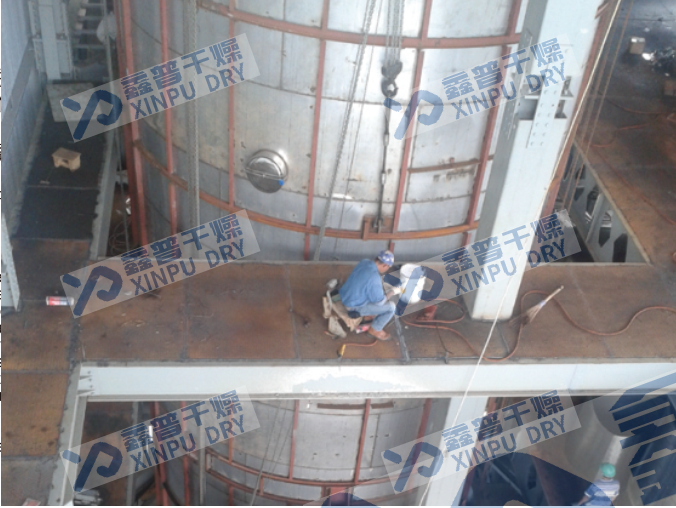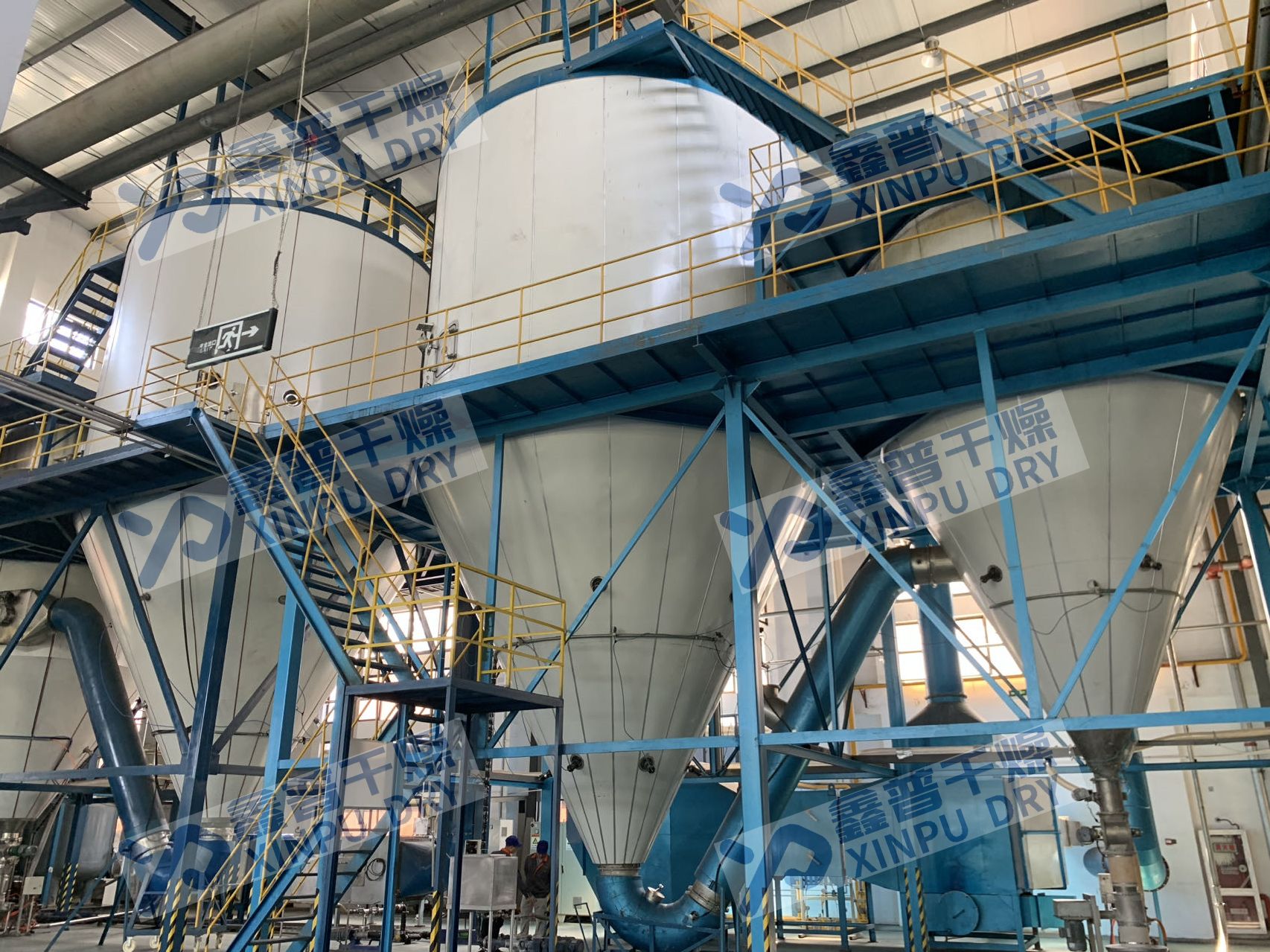Principle of operation
The working process of this unit is that the feed liquid is input at high pressure through the diaphragm pump, and the atomized liquid drops are sprayed out, and then fall down in parallel with the hot air. Most of the powder particles are collected by the discharge port at the bottom of the tower, and the waste gas and its tiny powder are separated by the cyclone separator. The waste gas is discharged by the exhaust fan, and the powder is placed under the cyclone separator.
The second stage dust collector can be equipped at the outlet of the fan, and the recovery rate is above 96-98%.
This unit is a device that can complete drying and granulation at the same time. According to the technological requirements, the pressure, flow rate and nozzle size of the feed liquid pump can be adjusted to obtain the required spherical particles in a certain proportion.
Process flow diagram
Performance characteristics
◎ The drying speed is fast, and the surface area of the feed liquid is greatly increased after atomization. In the hot air flow, 95%-98% of water can be evaporated instantly, and the drying time only takes ten seconds to tens of seconds, which is especially suitable for drying heat-sensitive materials.
◎ All products are spherical particles with uniform particle size, good fluidity, good solubility, high product purity and good quality.
◎ Wide application range, according to the characteristics of materials, it can be dried by hot air or granulated by cold air, which has strong adaptability to materials.
◎ Simple and stable operation, convenient control and easy realization of automatic operation.
Applied range
Spray-dried granules:
◎ Chemical industry: there are catalysts, resins, synthetic washing powders, oils and fats, ammonium sulfate, dyes, dye intermediates, white carbon black, graphite, ammonium phosphate, etc.
◎ Food: amino acids and analogues, seasonings, protein, starch, dairy products, coffee extract, fish meal, meat essence, etc.
◎ Pharmaceuticals: Chinese patent medicines, pesticides, antibiotics, medicinal granules, etc.
◎ Ceramics: magnesium oxide, porcelain clay, various metal oxides, dolomite, etc.
◎ Spray granulation: various fertilizers, alumina, ceramic powder, pharmaceuticals, heavy metal superhard steel, chemical fertilizers, granular washing powder and Chinese patent medicines.
Technical specifications
Model | Unit | 50 | 100 | 150 | 200 | 300 | 500 | 1000 |
Water evaporation | kg | 50 | 100 | 150 | 200 | 300 | 500 | 1000 |
The outline ruler can(Ф×H) | mm | 1600×8900 | 2000×11500 | 2400×13500 | 2800×14800 | 3200×15400 | 3800×18800 | 4600×22500 |
High pressure pump pressure | mPa | 2~10 | ||||||
Meritorious pawn | KW | 8.5 | 14 | 22 | 24 | 30 | 82 | 30 |
Intake air temperature | ℃ | 140~350 | ||||||
Water content of product | % | <5(up to 0.5) | ||||||
Material recovery | % | >97 | ||||||
Electric heating | KW | 75 | 120 | 150 | When the temperature is lower than 200, according to the actual technology. | |||
Electrification and steaming | Mpa+KW | 0.5+54 | 0.6+90 | 0.6+108 | ||||
(Hot-) blast furnace | Kcal/h | 10000 | 150000 | 200000 | 300000 | 400000 | 500000 | 1200000 |







